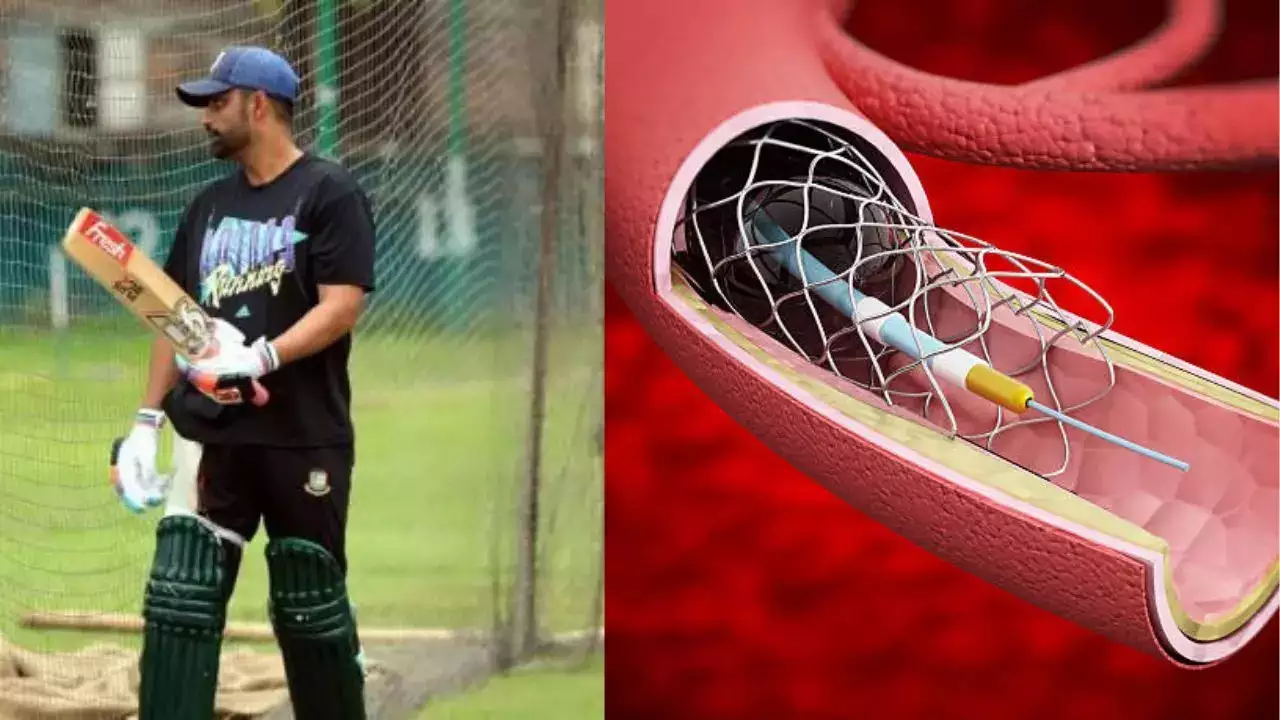Ashima Sharda Mahindra • 25 Mar 2025
Tamim Iqbal, Former Bangladesh Cricket Captain, Underwent Angioplasty After Suffering A Heart Attack; We EXPLAIN Why It Is Done

Angioplasty helps open blocked arteries for smooth flow of blood to the heart (Pic: Instagram/iStock)
Former Bangladesh cricket captain Tamim Iqbal suffered a heart attack during a Dhaka Premier Division Cricket League match following which doctors performed an emergency angioplasty.
According to news reports, while Tamim was leading in the field, in just one over of the game's first innings, he started feeling discomfort in his chest and was rushed to the hospital immediately. Doctors said Tamim was in critical condition and tests confirmed blockage in his arteries. "He returned to us in a critical condition. We can call it a heart attack, and we subsequently did an angiogram and angioplasty to remove the blockage. The medical procedure has gone smoothly. He is currently under observation,” a medical bulletin revealed.
What is angioplasty?
Angioplasty is a procedure to open blocked arteries for smooth flow of blood to the heart. According to experts, it most commonly treats atherosclerosis - a collection of plaque made of fat and cholesterol. Doctors say the procedure involves a tiny medical balloon that pushes plaque through spots that are too narrow or blocked.
Angioplasties are generally safe procedures and less invasive than other heart and vascular procedures, like bypass surgery.
When would you need an angioplasty?
You may need angioplasty if you have had :
A heart attack
Angioplasty limits damage to your heart during or right after a heart attack and is usually conducted in emergency situations.
Carotid artery disease
Doctors say angioplasty can also treat blocked carotid arteries, which can otherwise lead to a deadly stroke.
Kidney disease
Many times plaque collects in the arteries in your kidneys affecting blood and oxygen so, angioplasty helps in the free flow of blood.
Coronary artery disease
Your coronary arteries make it possible for your heart to beat and pump blood throughout your body. A blocked coronary artery can lead to severe chest pain, and heart attack in the long run.
What happens during an angioplasty?
According to doctors, the procedure of angioplasty is done by:
- A doctor would sedate you through an IV
- Certain monitors will keep track of your vital organs like pulse and oxygen levels
- Local anesthesia would be administered to numb the area where the artery would be accessed - usually in your groin or arm.
- The blood vessel will be accessed with a needle, slide with a tube
- An X-ray machine would allow the doctor to see where the catheter is going from all angles.
- The doctor would put a special dye into the tube which will then go to the artery.
- The doctor will be able to see the blockage or narrowing of your artery with the imaging and the area will be crossed with a guide wire. It would allow the balloon-tipped catheter to pass over the wire.
- Once across the blockage, doctors will then inflate the balloon, which can help improve the blood flow.
The entire procedure takes around 30 minutes to two hours to complete after which you may recover in the hospital.
Get Latest News Live on Times Now along with Breaking News and Top Headlines from Health and around the world.